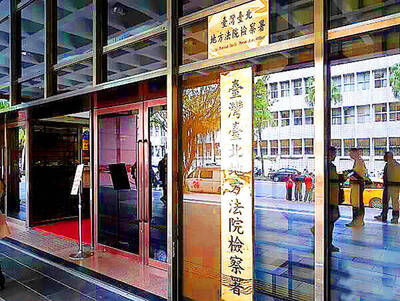An op-ed in the Chinese-language editions of People’s Daily and Global Times says there are no international waters in the South China Sea and that China should act with strength to repel US interference in the contested area.
In the article, which appeared last week, Pan Guoping (潘國平), a law professor at China’s Southwest University of Law and Politics, disputes the claim that the South China Sea comprises gonghai (公海), or “high seas,” as the term is translated in the UN Convention on the Law of the Sea (UNCLOS).
According to Article 86 of the convention, “high seas” refer to “all parts of the sea that are not included in the exclusive economic zone [EEZ], in the territorial sea or in the internal waters of a State, or in the archipelagic waters of an archipelagic State.”
By denying the presence of high seas in the South China Sea, China would deny freedom of navigation and use of airspace to other countries over the entire area, which Pan made clear.
“The United States is only a passer-by in the South [China] Sea ... As a country that has no sea coast in the region, does the United States have freedom of navigation and flight in the South [China] Sea? The answer is no! There is no international water in the South [China] Sea,” he wrote.
“China should act with stronger force ... to resolutely repel [US] interference, defend China’s nine-dotted line area that history has bestowed to us,” Pan wrote, referring to the large U-shaped swathe of territory claimed by China that encompasses most of the South China Sea.
Miles Yu wrote in the Washington Times that the article was “the clearest statement to date indicating the official Chinese Communist Party mouthpieces are specifically denying international freedom of navigation in one of the world’s busiest and most crucial waterways that China claims as its exclusive sovereign water.”
However, China analysts remain divided on the extent to which editorials appearing in official Chinese media truly reflect official policy in Beijing. Some have said that unless a piece appears in print, electronic articles appearing on the People’s Daily, the Global Times and Xinhua news agency Web sites are of variable influence and quality, and part of an internal debate rather than a statement of official policy. Pan’s article appeared in print in the international edition of the People’s Daily.
Sources close to Pan said he was “patriotic” and nationalistic on some international issues, but doubted his views on the South China Sea were “mainstream” among international law experts and Chinese government officials. It remains to be seen, therefore, whether Beijing has embraced a policy shift on the applicability of the “high seas” in the South China Sea.
An op-ed in Global Times in September warned of a “sea of fire” if claimants to islands in the South China Sea continued to oppose China’s claims.
Asked to comment on Pan’s article, the Ministry of Foreign Affairs in Taipei refused to go into detail, but reiterated the government’s long-held position that the Republic of China (ROC) has sovereignty over the region, that all claimants should set asides disputes and that the country would like to work with other countries to explore the region’s resources to jointly pursue peace and reciprocity.
James Tien (田中光), director-general of the ministry’s Department of East Asian and Pacific Affairs, said the ROC government’s assertion of sovereignty in the region was not in contradiction with US concerns over freedom of navigation.
“We are never opposed to freedom of navigation,” Tien said.
At the request of Chinese Nationalist Party (KMT) Legislator Herman Shuai (帥化民), a project to draw up and publish a new map of the South China Sea where the country has sovereignty is currently underway, Tien said.
Tien said the Ministry of the Interior would present a detailed report on the country’s territorial position and its line of reasoning after it completes the map.
The government bases its sovereignty claim on a map developed in 1947 using 11 interrupted lines drawn in a “U-shape” showing that the Spratly Islands (南沙群島), the Paracel Islands (西沙群島), the Macclesfield Bank (中沙群島) and the Pratas Islands (東沙群島) were within the territory of the country with reference to history, geography and international law.
Also last week, Major General Luo Yuan (羅援), a researcher at China’s Academy of Military Science of the People’s Liberation Army (PLA), said countries disputing China’s claims to the South China Sea would be making a mistake in interpreting Beijing’s “goodwill” and “self-restraint” for “softness” and “weakness.”
Countries that made such a mistake “can only get the opposite of what they wish for,” the South China Morning Post quoted the analyst as saying.
In a clear warning to what China sees as external interference in its backyard, Luo said Washington and Tokyo would only make things more complicated by getting involved in the overlapping claims over a series of islets in the South China Sea, which involves five of the 10 ASEAN member states as well as Taiwan.
These developments occured as Vietnamese Prime Minister Nguyen Tan Dung said for the first time on Friday that China had used military force to occupy the disputed Paracels in 1974.
China, he said, “used force to occupy all of the Hoang Sa [Paracel] Islands” in 1974, when the islands were jointly controlled by China and then-South Vietnam.
In related developments, the PLA said last week it had set up a strategic planning department as the army is rapidly modernizing to undertake more sophisticated operations.
The report, which appeared on the People’s Liberation Army Daily’s Web site, said the department, which will be administered by the General Staff Headquarters, will study critical strategic issues, draft plans and reform proposals for the PLA’s development, submit suggestions on the allocation of PLA strategic resources and examine and evaluate the implementation of PLA development plans.
Luo told the China Daily the move was in response to “increasingly sophisticated military operations in the future that might involve multiple combat forces and headquarters.”
“The new department will become an authoritative and comprehensive planning center,” Luo said.
Asked for comment, China watcher Gordon Chang (章家敦) expressed alarm at this development.
“Notice this is the same Luo Yuan who just threatened to use China’s military to enforce Beijing’s expansive claims to the entire South China Sea,” he told the Taipei Times.
“There are few coincidences when it comes to the PLA. They are planning to wage war and China’s flag officers are not shy in telling us how far they will go to achieve their objectives,” he said.
Additional reporting by Shih Hsiu-chuan

INVESTIGATION: The case is the latest instance of a DPP figure being implicated in an espionage network accused of allegedly leaking information to Chinese intelligence Democratic Progressive Party (DPP) member Ho Jen-chieh (何仁傑) was detained and held incommunicado yesterday on suspicion of spying for China during his tenure as assistant to then-minister of foreign affairs Joseph Wu (吳釗燮). The Taipei District Prosecutors’ Office said Ho was implicated during its investigation into alleged spying activities by former Presidential Office consultant Wu Shang-yu (吳尚雨). Prosecutors said there is reason to believe Ho breached the National Security Act (國家安全法) by leaking classified Ministry of Foreign Affairs information to Chinese intelligence. Following interrogation, prosecutors petitioned the Taipei District Court to detain Ho, citing concerns over potential collusion or tampering of evidence. The

Seventy percent of middle and elementary schools now conduct English classes entirely in English, the Ministry of Education said, as it encourages schools nationwide to adopt this practice Minister of Education (MOE) Cheng Ying-yao (鄭英耀) is scheduled to present a report on the government’s bilingual education policy to the Legislative Yuan’s Education and Culture Committee today. The report would outline strategies aimed at expanding access to education, reducing regional disparities and improving talent cultivation. Implementation of bilingual education policies has varied across local governments, occasionally drawing public criticism. For example, some schools have required teachers of non-English subjects to pass English proficiency

‘FORM OF PROTEST’: The German Institute Taipei said it was ‘shocked’ to see Nazi symbolism used in connection with political aims as it condemned the incident Sung Chien-liang (宋建樑), who led efforts to recall Democratic Progressive Party (DPP) Legislator Lee Kun-cheng (李坤城), was released on bail of NT$80,000 yesterday amid an outcry over a Nazi armband he wore to questioning the night before. Sung arrived at the New Taipei City District Prosecutors’ Office for questioning in a recall petition forgery case on Tuesday night wearing a red armband bearing a swastika, carrying a copy of Adolf Hitler’s Mein Kampf and giving a Nazi salute. Sung left the building at 1:15am without the armband and apparently covering the book with a coat. This is a serious international scandal and Chinese

NEGOTIATIONS: The US response to the countermeasures and plans Taiwan presented has been positive, including boosting procurement and investment, the president said Taiwan is included in the first group for trade negotiations with the US, President William Lai (賴清德) said yesterday, as he seeks to shield Taiwanese exporters from a 32 percent tariff. In Washington, US Trade Representative Jamieson Greer said in an interview on Fox News on Thursday that he would speak to his Taiwanese and Israeli counterparts yesterday about tariffs after holding a long discussion with the Vietnamese earlier. US President Donald Trump on Wednesday postponed punishing levies on multiple trade partners, including Taiwan, for three months after trillions of US dollars were wiped off global markets. He has maintained a 10 percent